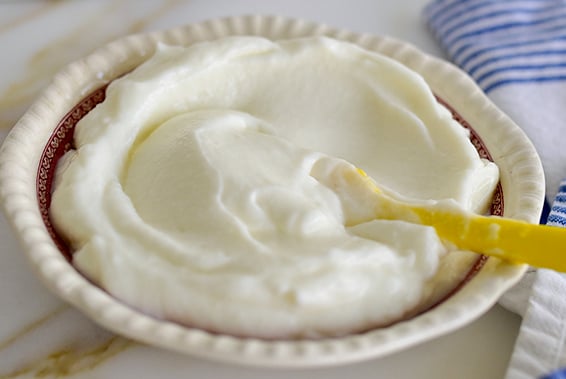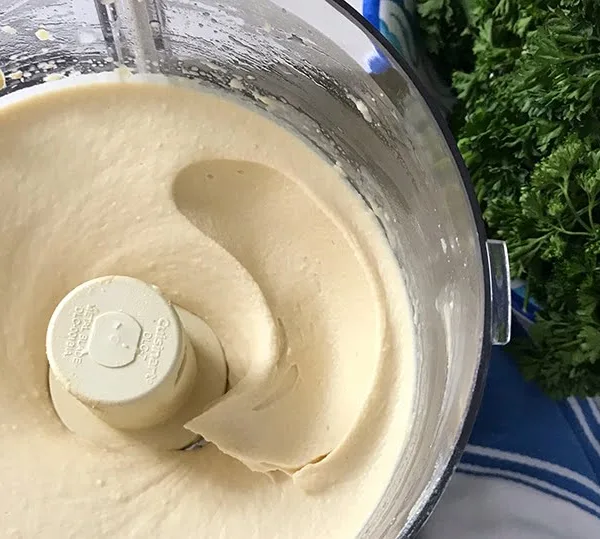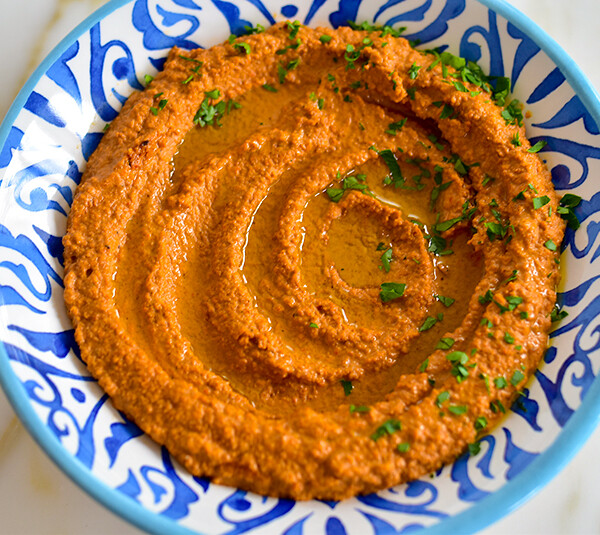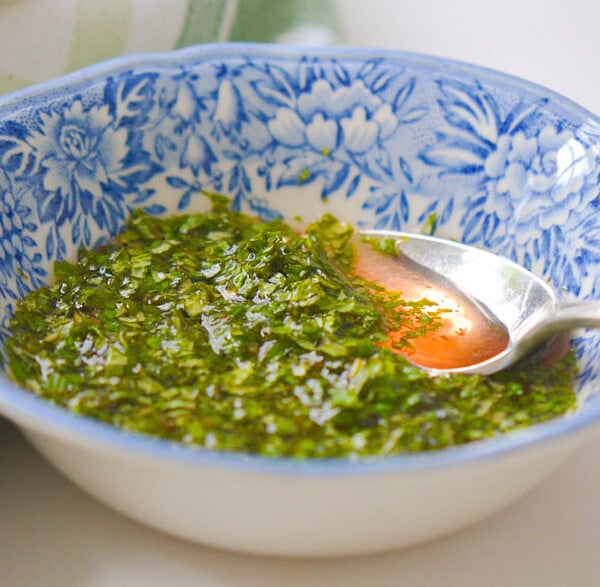This post may contain affiliate links. Please read our disclosure policy.
Basil oil is such a jewel of an oil, with the incredible vibrant flavor and color of basil at its very essence. The oil is simple to make and stores well!
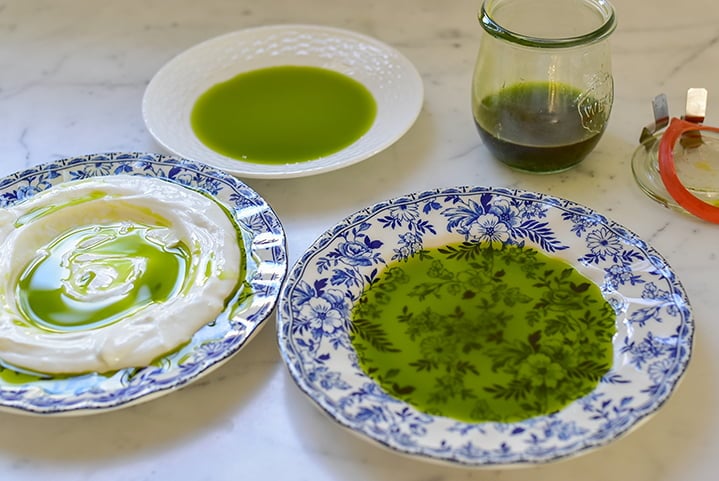
Basil oil is a vibrant green, aromatic oil, capturing the very essence of basil in a luscious, homemade herb-infused oil. This delicious oil enhances the flavor of a variety of dishes, but I enjoy it most as a dipping oil on its own or atop labneh as part of a mezze.
It’s also a great way to make use of the bounty of basil in season from your herb gardens or a thriving basil plant. The oil is so evocative and wonderful that it’s worth buying basil even in the little clamshell containers fully out of season, for a breath of fresh air.

Notes About the Ingredients
- Basil Leaves: Of course! Fresh, vibrant basil leaves are essential. They provide the herbal flavor and delicate aromas that make this oil shine. Thai basil or traditional sweet basil work well, and note that you can also use other herbs to make the oil, or a combination.
- Extra Virgin Olive Oil: Use high quality extra virgin olive oil as your carrier oil. This will not only act as a great finishing oil but will also enhance the overall taste, making it suitable for both dipping oil and salad dressings. Here is the perfect use for our special imported Lebanese extra virgin olive oil.
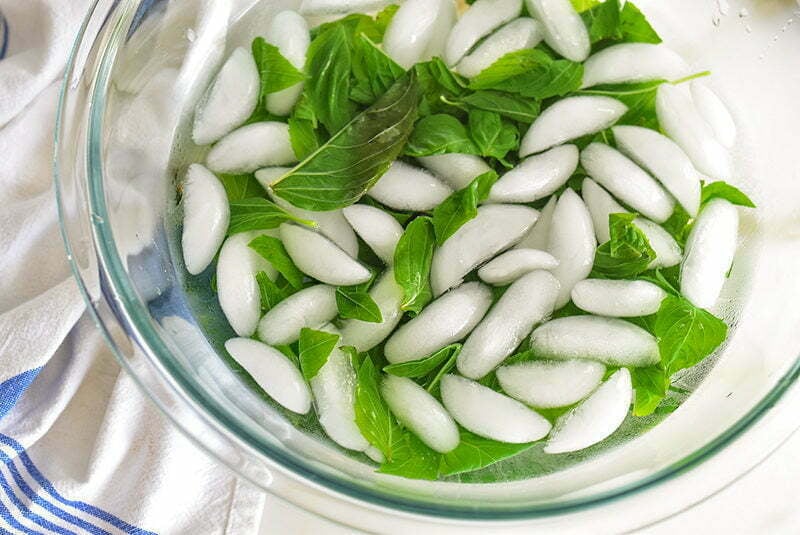
Helpful Tips
- Blanching Basil: Key! Don’t skip this step! Quickly blanch the basil leaves by dipping them in hot water and then transferring them immediately to an ice bath. This helps in retaining the vibrant green color and removes excess moisture from the leaves.
- The Purée: A good blender (I’m in love with my Vitamix blender) or food processor is your best tool to finely blend the blanched basil leaves with the olive oil.
- Straining: Once blended, strain the mixture through a fine sieve or cheesecloth to achieve a smooth and delicate herb oil, free of any herb particles. Can you eat the oil without straining? Sure! But for a pure oil, the straining is essential and makes an oil rather than an herb purée, which is more like a pesto. Use the remaining pureed herb in some other dish that will be more delicious because of it! I’m thinking of my basil zucchini soup recipe here as well.
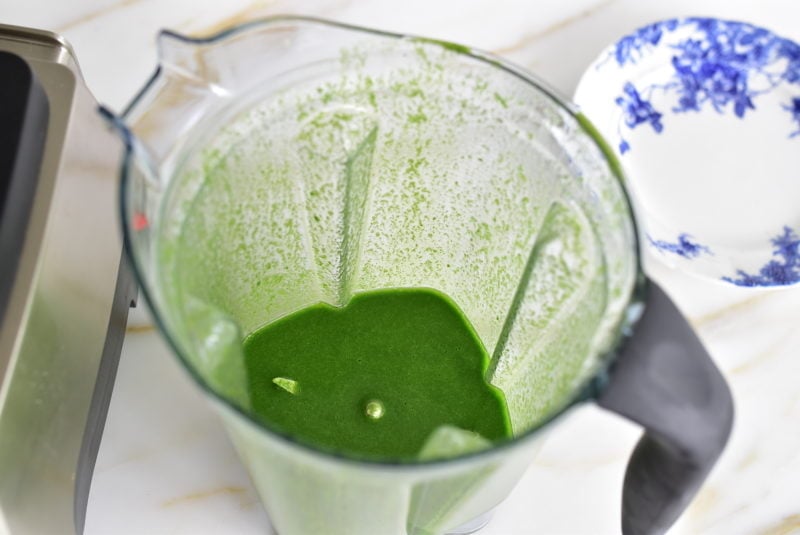
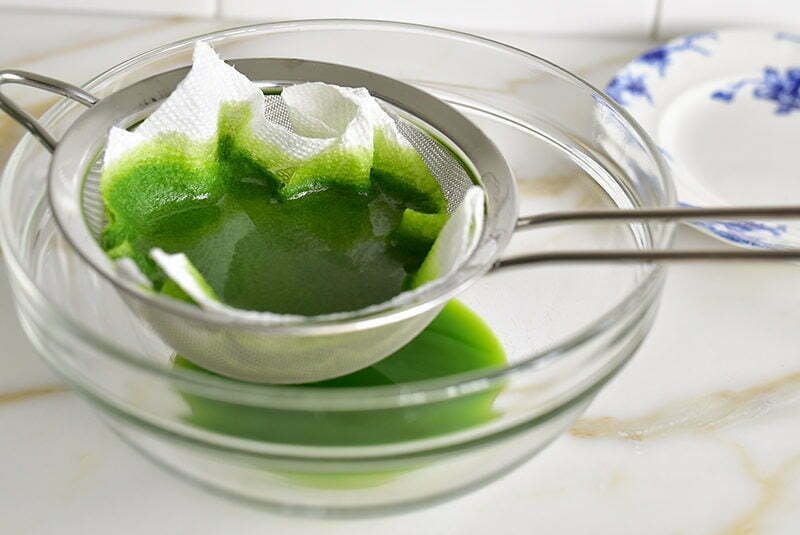
How to Serve It
Basil oil is a finishing oil with endless possibilities. Here are a few ways you can enjoy it:
- As a Dip: Basil oil stands beautifully on its own! Serve it in a little bowl or on a rimmed plate along with good bread. Homemade pita is glorious here! Drizzle over bowls of labneh or hummus for a gorgeous show and wonderful flavor.
- Caprese Salad: Drizzle the aromatic basil oil over fresh mozzarella, tomatoes, and a pot of basil for a delightful twist.
- Crusty Bread, Talami, or Homemade Focaccia: Use as a dipping oil or brush it over homemade bread for added flavor.
- Pasta and Tomato Salad: A perfect choice for your favorite pasta dish or tomato salad, adding a burst of herbal flavor.
- Avocado Toast: Elevate your breakfast by drizzling this herb-infused oil over avocado toast.
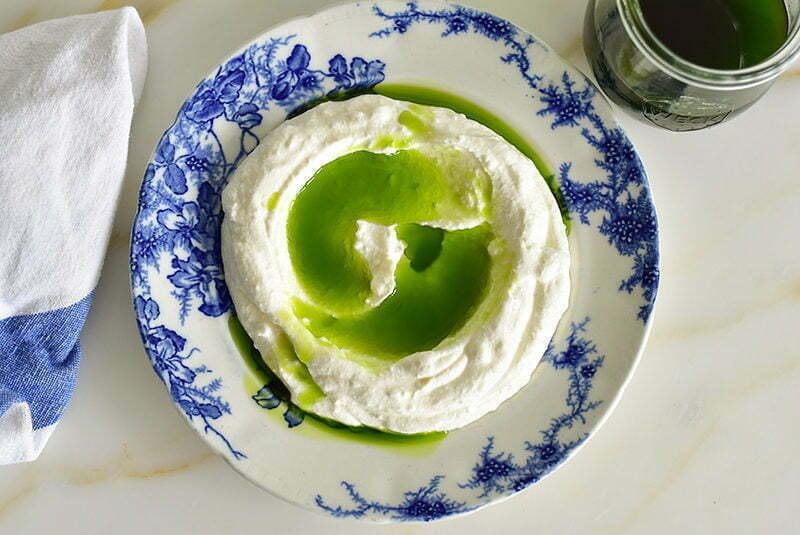
Storage
To preserve the delicious oil’s integrity and flavor, store it in these ways:
- Room Temperature: Store in a sterilized, airtight bottle away from direct sunlight for up to a week for short-term use.
- Refrigeration: Extend its shelf life up to a month or longer by keeping it in the refrigerator. The oil may solidify; simply bring it back to room temperature before use.
- Freezing: For long-term storage, pour the fresh basil oil into ice cube trays and freeze. Once frozen, transfer the cubes to a freezer-safe bag.
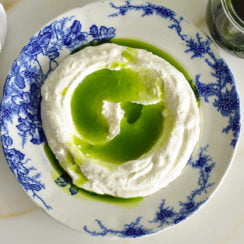
Basil Oil Recipe
Equipment
Ingredients
- 4 cups basil leaves
- 2 cloves garlic, sliced in half
- 1 teaspoon kosher salt
- 3/4 cup extra virgin olive oil, use mild olive oil or a neutral oil (such as safflower or canola)
Instructions
- Make an ice bath in a large bowl with several cups of ice and a couple of cups of water. Set aside.
- In a medium saucepan, bring a couple of quarts of water to boil. Plunge the basil and the garlic in the boiling water for about 15 seconds, then transfer the basil immediately to the ice bath. Set the garlic aside.
- Once the basil is chilled in the ice bath, transfer the basil to a clean towel and wring out as much water from the basil as possible.
- In a blender or food processor, combine the basil, garlic, salt and oil. Blend on high speed for about one minute, then a second time for about a minute.
- Line a strainer with a layer of paper towel or a couple of layers of cheesecloth, and place the strainer over a bowl. Pour the blended oil into the strainer, and allow the oil to strain for a good half hour.
- Pour the oil from the bowl into a jar; taste and add more salt, if needed.
Nutrition
Nutrition information is automatically calculated, so should only be used as an approximation.
